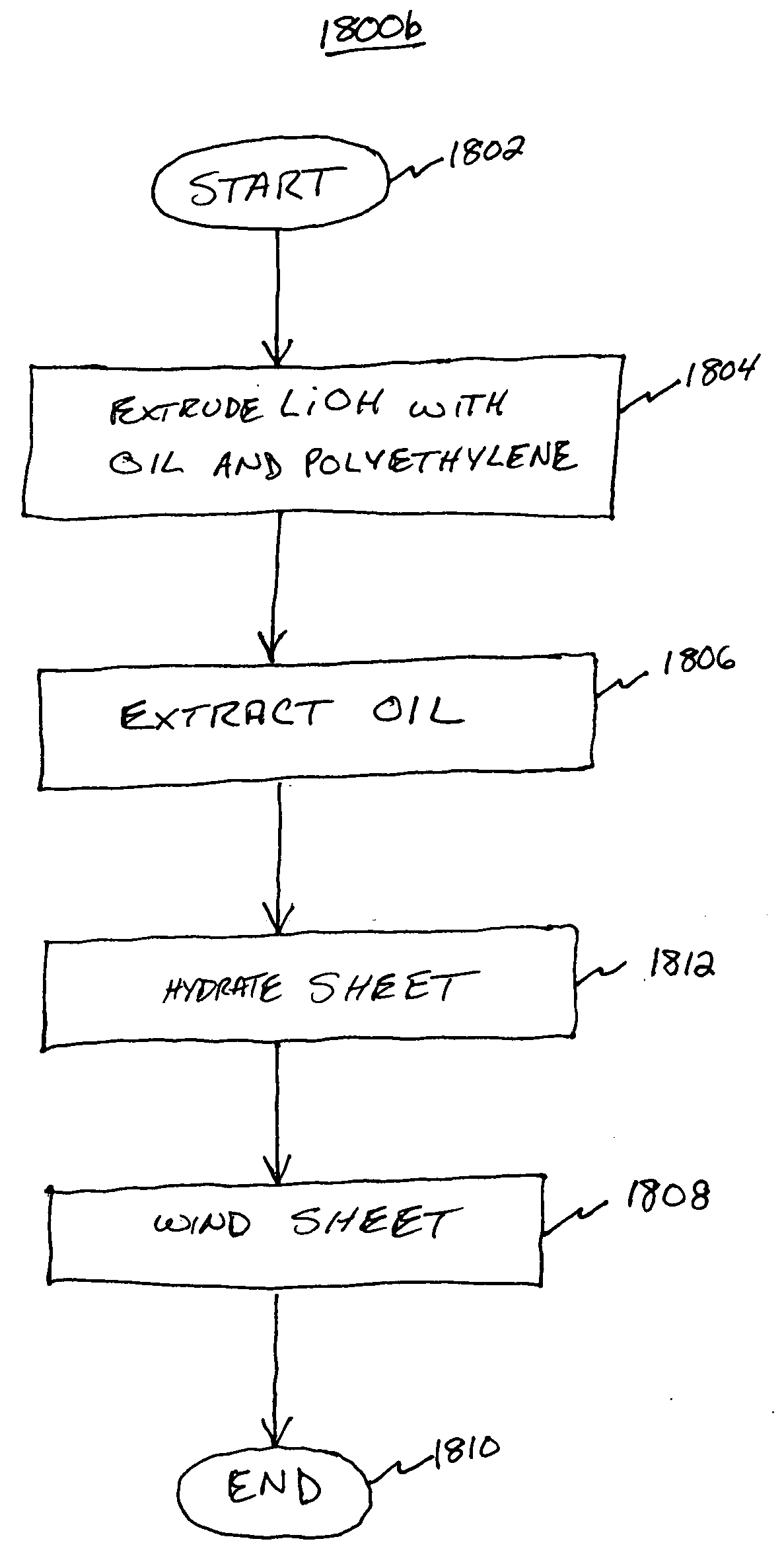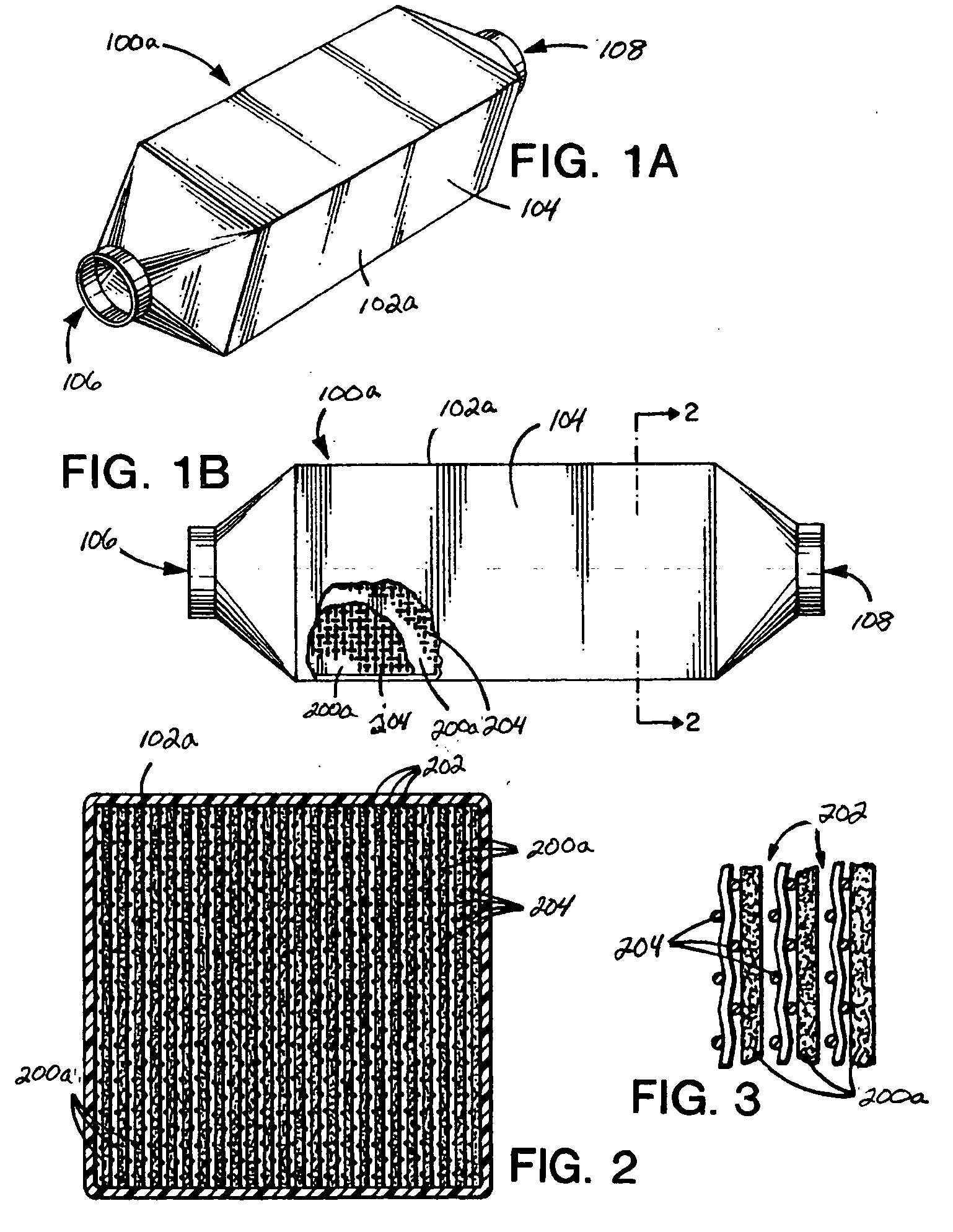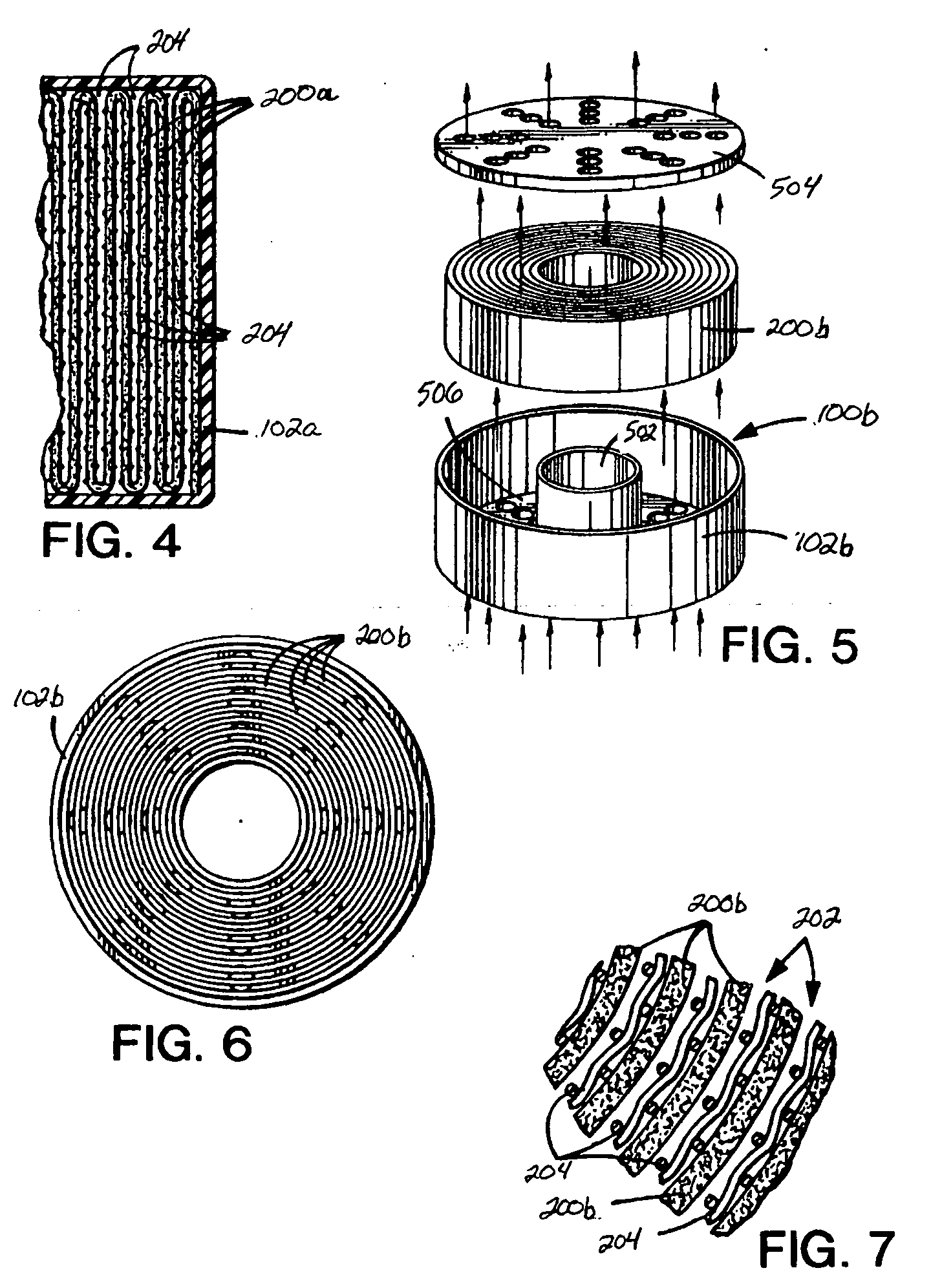Method of manufacturing and using enhanced carbon dioxide adsorbent
a carbon dioxide and adsorbent technology, applied in the field of manufacturing and using enhanced carbon dioxide adsorbent, can solve the problems of low system pressure drop requirements, large adsorbent particle size of current adsorbent canisters, and difficulty in breathing
- Summary
- Abstract
- Description
- Claims
- Application Information
AI Technical Summary
Benefits of technology
Problems solved by technology
Method used
Image
Examples
example 1
[0096] A pre-hydrated LiOH adsorbent sheet, wound into a cartridge may be made from the following components by spraying water onto the ribbed side of the sheet surface in order to achieve a 7% w / w water content: [0097] LiOH adsorbent density 0.71 g / cm3, 2.5 percent polyethylene, 0.025 inch rib height, 0.060 inch rib width, 0.120 inch channel width, 0.070 inch sheet thickness, density before water 134 g / ft2, cartridge length 12 inches, cartridge diameter 6½″, wound on a ½″ diameter polyethylene core with core plug.
example 2
[0098] LiOH CO2 cartridges may be made from the following components by spraying water onto the ribbed side of the sheet surface at the following levels: 0, 1.9, 4.7, 9 and 16.5 percent water weight / wet weight: [0099] LiOH adsorbent density between 0.59 and 0.66 g / cm3, 2.5 percent polyethylene, 0.032 inch rib height, 0.060 inch rib width, 0.120 inch channel width, 0.050 inch sheet thickness, density before water 94 g / ft2, cartridge length 2.5 inch, cartridge diameter 3{fraction (7 / 16)} inches, wound on a ½ inch diameter polyethylene core with core plug.
[0100] The adsorbent LiOH density for Example 1 is 0.71 g / cm3. The LiOH adsorbent density for Example 2 is 0.59 to 0.66 g / cm3. The LiOH adsorbent density in sheet form for a U.S. Navy sub application is typically 0.81 g / cm3. The LiOH adsorbent density for CO2 adsorbent (sheet) according to the principles of the present invention may be controlled by the amount of oil used at the extrusion step. Removal of the oil at the extraction st...
PUM
| Property | Measurement | Unit |
|---|---|---|
| Fraction | aaaaa | aaaaa |
| Fraction | aaaaa | aaaaa |
| Fraction | aaaaa | aaaaa |
Abstract
Description
Claims
Application Information
 Login to View More
Login to View More - R&D
- Intellectual Property
- Life Sciences
- Materials
- Tech Scout
- Unparalleled Data Quality
- Higher Quality Content
- 60% Fewer Hallucinations
Browse by: Latest US Patents, China's latest patents, Technical Efficacy Thesaurus, Application Domain, Technology Topic, Popular Technical Reports.
© 2025 PatSnap. All rights reserved.Legal|Privacy policy|Modern Slavery Act Transparency Statement|Sitemap|About US| Contact US: help@patsnap.com



